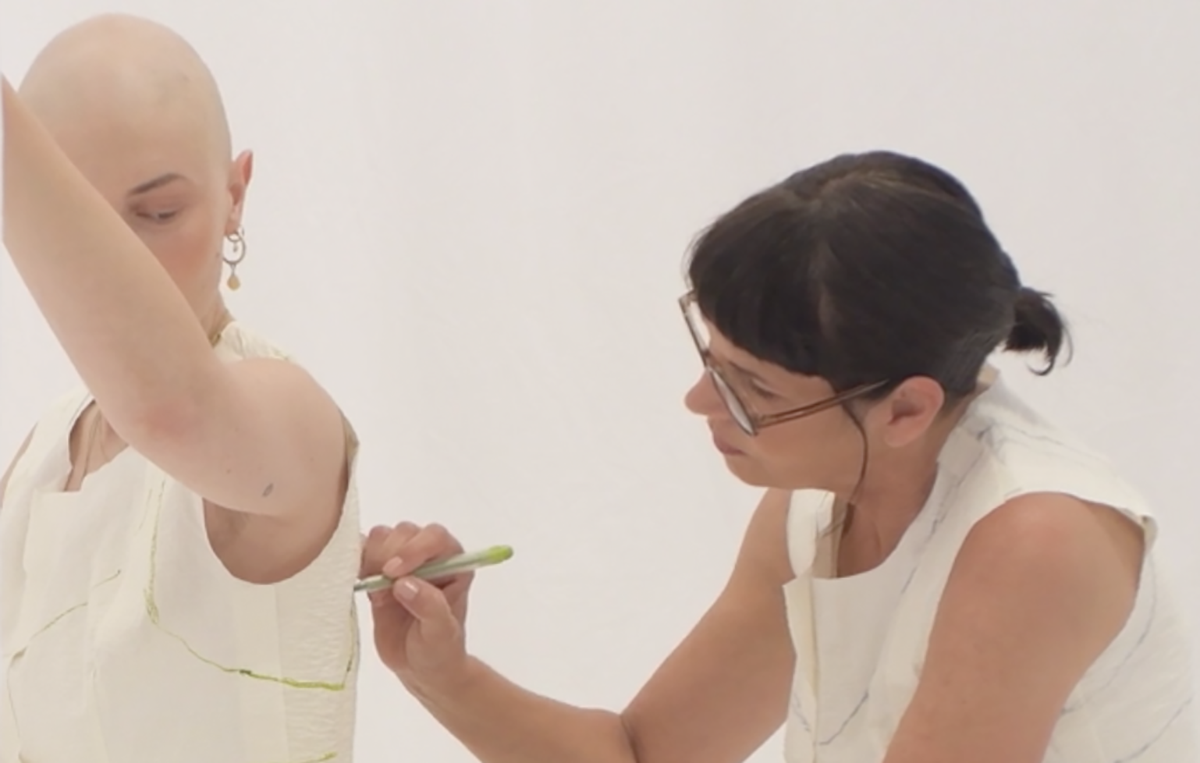
'Refashion: Investigating Post-Mastectomy Lingerie Needs’: a AHRC supported project investigating clothing needs for women who have undergone mastectomy through participatory prototyping design sessions.
Photo: Laura Knoops and Julia Lee Goodwin
Expression is what’s really important
When we foster collaboration between the arts and research, we unlock untold benefits for professionals in both sectors, Christopher Smith writes.
A woman sits, surrounded by books, notes and a computer. She is trying to express her thoughts about a problem. How can she best shed light on her thought process and the choices she makes? How can she arrive at a satisfying solution? How can the outcome shape the way we see the world?
What is the difference really between this woman thinking through a problem in history or physics versus a problem in how to produce art? At a fundamental level, there is none. The rigorous process of choosing, framing, and marrying form and content, the hard work of thinking, re-thinking and starting again – and the unexpected flash of inspiration that finally unlocks the problem – are all shared experiences.
Process and product
For eight years I had the honour of being Director of the British School at Rome, a leading research institute which offers residencies for artists and scholars. Time and again we were struck by the commonality of experience more than the differences. Both camps shared similar frustrations, practices and goals. It was the form of what was produced – not the rigour or the process – that varied.
Given the similarities between producing art and research, what happens when artists and scholars work together? It is essential we approach this challenge without diminishing the role of either party. Art does not exist to publicise research, nor is research without its own aesthetics. Partnerships based on equal respect are essential if collaborations between the arts and research are to be truly enhancing.
Recently I watched a group of photographers, poets and artists talking about their different approaches to modernist industrial architecture, the subject of a Manchester School of Architecture research project supported by the UK Research and Innovation Arts and Humanities research Council (AHRC) and Natural Environment Research Council. ‘The Landscapes of Post-War Infrastructure’ thought creatively about powerful infrastructure like motorways, reservoirs and power stations. Photography, poetry and film were married with archival research and a broader understanding of the social forces which drove this innovation. This helped the team assess the quality of original planning decisions and made me understand these interventions across the breadth of human intervention in the environment. It is just one example of how attending to a problem through the same processes, but different methodologies and practices, leads to deeper, richer understanding.
Building bridges
It is easy to identify challenges, but it is also easy to overstate or misplace them. We can exaggerate the difficulty of artists and researchers finding common ground. Of course, it requires an openness to learn and share. But the structural issues are a bit trickier: how does one assess art or performance alongside articles and essays? How can we manage the different timescales involved? How do we ensure fair partnership given these differences?
Our challenge is to create the right bridges. Revaluating the benefits of practice-based research by artists is a critical and urgent task for AHRC. We are already investing in collaborative partnerships, including doctoral training, which will transform the communities of expertise needed to find creative solutions to pressing global concerns such as sustainable fashion and forced migration.
The first of these is beautifully exemplified by work on new biodegradable fashion materials being conducted by Business of Fashion, Textiles and Technology and Future Fashion Factory. These partners are investigating clothing needs for women who have undergone mastectomies through participatory prototyping design sessions. Across these and other collaborations, artistic practice and artistic and research methodologies are showing the very best features of practice-based research.
Similarly, the AHRC and Economic and Social Research Council’s collaboration with Imperial War Museums to explore refugee stories, expresses some of the most moving research outcomes through poetry, animation and film. Our Research in Film Awards are another example of how we are trying to build bridges and create the conditions for collaboration.
Equal merit
My experience of seeing artists and researchers work separately and together is that both engage in forms of investigation and practice. They offer different methodologies and modes of expression for attending to the world and our place in it – topics that are too complex and full of wonder for anything less. The AHRC is committed to enriching the dialogue between groups who have traditionally been pigeonholed as either researchers or practitioners. One day, perhaps, we will give equal value to all the many ways in which we creatively investigate our world.
I want the woman with whom I started this piece to believe it won’t matter whether she expresses herself in dance, photography, sculpture, experiment or argument, alone or in a community of knowledge and practice. I hope she will know it only matters that she has changed the way we see the world.
Professor Christopher Smith is Executive Chair of the Arts and Humanities Research Council (AHRC).
Join the Discussion
You must be logged in to post a comment.